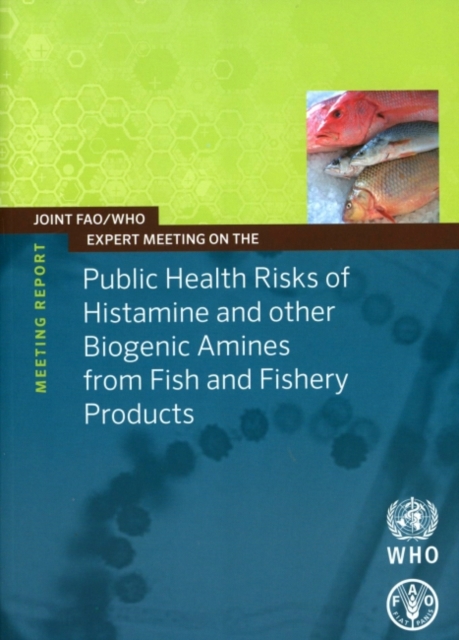
Joint FAO/WHO expert meeting on the public health risks of histamine and other biogenic amines from fish and fisheries products : meeting report, 23-27 July 2012, FAO Headquarters, Rome Italy Paperback / softback
by Food and Agriculture Organization
Paperback / softback
Description
Histamine formation in fish is dependent on the time/temperature conditions under which the fish is handled, and therefore time/temperature control needs to be taken into consideration from harvest through consumption.
There are many fish harvesting methods used throughout the world, employing hooks, nets and traps.
These may involve small vessels, large vessels or be shore based.
In all cases, live retrieval of the fish, cooling as quickly as possible to temperatures which do not promote bacterial growth, and maintaining at cool temperatures are critical both to discourage histamine formation and to preserve quality.
Information
-
Available to Order - This title is available to order, with delivery expected within 2 weeks
- Format:Paperback / softback
- Pages:136 pages
- Publisher:Food & Agriculture Organization of the United Nati
- Publication Date:30/11/2013
- Category:
- ISBN:9789251078495
Information
-
Available to Order - This title is available to order, with delivery expected within 2 weeks
- Format:Paperback / softback
- Pages:136 pages
- Publisher:Food & Agriculture Organization of the United Nati
- Publication Date:30/11/2013
- Category:
- ISBN:9789251078495






